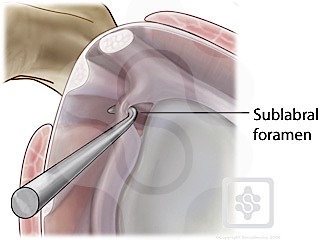Glenoid Labrum
The shoulder joint is considered a 'ball and socket' joint, however, the 'socket' (the glenoid fossa of the scapula) is quite shallow and small, covering at most only a third of the 'ball' (the head of the humerus). The socket is deepened by the glenoid labrum.
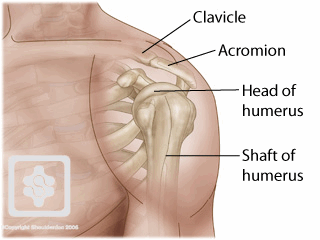
The glenoid labrum is similar to the meniscus of the knee. It is a fibro-cartilaginous rubbery structure which encircles the glenoid cavity deepening the socket providing static stability to the glenohumeral joint. It acts and looks almost like a washer, sealing the two sides of the joint together.
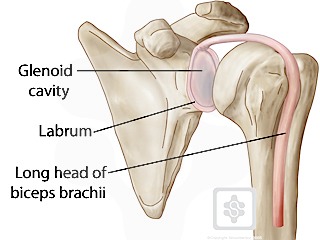
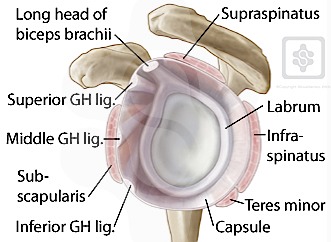
The labrum is described like a clock face with 12 o'clock being at the top (superior), 3 o'clock at the front (anterior), 6 o'clock at the bottom (inferior) and 9 o'clock at the back (posterior). Clinicans may reverse the 3 o'clock and 9 o'clock for left shoulder describing 3 o'clock at the back. This can be confusing, so the European Society of Shoulder & Elbow Surgeons (SECEC) has agreed to keep 3 o'clock at the front for either shoulder.
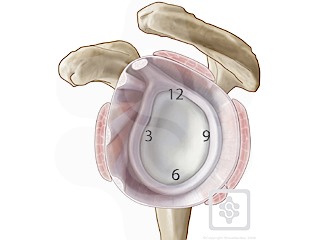
An injury to the shoulder with shear forces either in the anterior or posterior or superior directions leads to a labral tear in the affected area. An injury between 3 and 6 o'clock is known as a Bankart tear . Superior labral injury is known as a SLAP tear (superior labral anteroposterior). A posterior tear of the posterior labrum is known as a posterior labral tear of reverse Bankart lesion.
Sublabral foramen are anatomical variants, which is where the labrum can be 'lifted up' between 12 and 3 o'clock. It should not be confused with a labral tear, as its edge is clearly round and smooth and not red and ragged.
